Diamond Grading 101: Everything You Need to Know Before Buying
Understanding how diamonds are graded can be the key to making a confident, well-informed engagement ring purchase. Whether you're selecting a natural diamond, lab-grown diamond, or considering ethical alternatives like moissanite, learning how diamond quality is measured empowers you to find the perfect stone for your style and budget.
The History of Diamond Grading
The history of diamond grading spans thousands of years, from ancient admiration of the gemstone to the development of scientifically rigorous classification systems in the 20th century. While diamonds have always captivated humans with their brilliance, rarity, and strength, understanding and standardizing their quality took centuries of cultural evolution, trade practices, and finally, modern gemological science. The journey toward today’s globally recognized grading systems reflects both human fascination with perfection and the need for commercial fairness and transparency.
Early Use and Primitive Grading: Antiquity to the Middle Ages
The first known mention of diamonds dates back over 2,500 years to ancient India, where the earliest diamonds were discovered in riverbeds, particularly along the Krishna, Godavari, and Penner rivers. Ancient Indian texts, including the Arthashastra (written around 300 BCE), mention diamonds and their characteristics. Though rudimentary, this document describes a four-fold classification system that considered luster, hardness, clarity, and shape. Diamonds were graded by their brilliance and were believed to possess spiritual and healing properties.
In ancient Rome, Pliny the Elder (23–79 CE) remarked on the diamond’s exceptional hardness and clarity in his encyclopedic work Naturalis Historia. While there was no formal grading system in Roman times, there was certainly an appreciation for better-looking stones, and traders were known to judge diamonds by eye for clarity and transparency.
During the Middle Ages, diamonds were symbols of divine and royal power across Europe and Asia. Diamonds were rarely cut or polished due to the lack of technology to work with such a hard material. Therefore, grading was primarily based on the rough appearance, size, and rarity
The Renaissance and the Birth of Diamond Cutting (14th–17th Centuries)
A major shift occurred in the 14th and 15th centuries with the emergence of diamond cutting. This was catalyzed by the discovery of diamond deposits in Central India and advancements in cutting technology. The point cut and table cut became the first recognizable diamond shapes.
During the Renaissance period, European jewelers in Venice and Bruges began experimenting with diamond faceting, which dramatically changed how diamonds were evaluated. Cut became a visual factor in perceived diamond quality. However, grading remained highly subjective. Still, the 16th century saw the first systematic attempts to evaluate diamonds based on shape, symmetry, and reflectivity.
The Portuguese explorer Vasco da Gama’s voyage around the Cape of Good Hope in 1498 opened maritime trade with India, enabling more consistent access to diamonds in Europe. By the late 17th century, India remained the only known source of diamonds until new deposits were discovered.
The Rise of Diamond Trade and Unofficial Grading (18th–19th Centuries)
The discovery of the Golconda mines in India and, later, rich diamond fields in Brazil (1725) shifted global supply chains. Brazilian diamonds began flooding the European markets by the mid-18th century, leading to increased demand for differentiation among stones.
During this period, no standardized grading system existed. Instead, jewelers and traders used arbitrary terms such as “first water” (indicating perfect clarity) or “Cape diamonds” (denoting stones with a yellowish tint, often originating from South Africa after its deposits were discovered in the 1860s). Diamonds were classified by merchants according to local standards, often based on:
● Apparent whiteness
● Absence of visible inclusions
● Size and symmetry
● Luster and brilliance
However, these descriptions lacked uniformity. What was called a “fine” diamond in London might not be similarly regarded in Paris or New York.
The late 19th century saw a major inflection point in diamond history: the discovery of massive diamond reserves in Kimberley, South Africa (1867). This event not only increased global supply but also prompted the consolidation of the diamond trade under larger entities, most notably De Beers, founded by Cecil Rhodes in 1888. De Beers would come to control nearly 90% of the global diamond trade by the early 20th century.
With larger quantities entering the market, consistent grading became increasingly important. However, no universal standard had yet been adopted. Dealers typically used colored cards or handmade color master sets to compare stones visually
Scientific Breakthroughs and the Foundations of Modern Gemology (Early 20th Century)
The early 1900s saw rapid growth in diamond demand, particularly in the U.S., where jewelry retail expanded alongside the rise of the American middle class. Jewelers such as Tiffany & Co. and C.D. Peacock marketed diamonds based on visual quality, and terms like “Blue-White” were widely used to describe diamonds with blue fluorescence and high whiteness.
However, the lack of regulation led to inconsistencies and, at times, consumer deception. This inconsistency became especially problematic during the Great Depression, when ethical retail practices came under scrutiny. There was a clear need for a standardized system of diamond assessment one based on science rather than marketing rhetoric.
This laid the groundwork for formal gemological study. In 1931, a pivotal moment occurred: Robert M. Shipley, a former jewelry retailer who believed in professionalizing the trade, founded the Gemological Institute of America (GIA) in Los Angeles. The institute aimed to educate jewelers and introduce scientific rigor into the trade.
In the same decade, Shipley also formed the American Gem Society (AGS) to promote ethical standards and better gemological knowledge among retailers.
Understanding Diamond Grading & the Certification Process
Diamond grading is the process of evaluating a diamond’s quality and characteristics using internationally recognized standards. It involves a thorough inspection by trained gemologists who assess specific attributes—cut, color, clarity, and carat—along with other details like symmetry and polish. These evaluations are compiled into a certificate, or grading report, which ensures transparency and helps buyers make informed comparisons.
How the Grading Process Works:

|
-
Visual & Microscopic Examination: Gemologists examine the diamond under 10x magnification to detect internal and external flaws.
-
Measurement Tools: Instruments are used to evaluate precise dimensions, angles, and facet symmetry.
-
Light Performance Testing: The diamond's ability to reflect and refract light is tested to assess brilliance.
-
Certification: After analysis, a detailed report is issued by a gemological lab confirming its grade and authenticity.
In this guide, we break down everything you need to know about diamond grading—from the 4Cs to clarity charts, certification bodies, and how to compare diamond types.
What Are the 4Cs of Diamond Grading?
The 4Cs—Cut, Color, Clarity, and Carat Weight—form the international standard for evaluating diamond quality. This system was developed by the Gemological Institute of America (GIA) and is still widely used by grading labs today.

|
1. Cut
-
Cut refers to how well the diamond has been shaped and faceted.
-
It impacts the brilliance, sparkle, and overall beauty of the stone.
-
Grades range from Excellent to Poor.
-
Well-cut diamonds reflect light better and often look larger than their carat weight suggests.
2. Color

|
-
Diamond color grades measure the lack of color in a white diamond.
-
The GIA scale ranges from D (colorless) to Z (noticeable yellow or brown tint).
-
D–F: Colorless (most premium)
-
G–J: Near Colorless (great value)
-
K–M: Faint Color (warm tones)
3. Clarity
-
Clarity evaluates how free a diamond is from inclusions and blemishes.
-
Graded using the GIA clarity scale:
-
FL: Flawless
-
IF: Internally Flawless
-
VVS1–VVS2: Very, Very Slightly Included
-
VS1–VS2: Very Slightly Included
-
SI1–SI2: Slightly Included
-
I1–I3: Included (visible to the naked eye)
-
4. Carat Weight
-
Carat refers to the weight of the diamond, not necessarily its size.
-
1 carat = 200 milligrams.
-
Two diamonds of the same carat can appear different in size based on cut proportions.
🧪 Measuring Carat Weight: What You Need to Know

|
A diamond’s carat refers to its weight, not its exact visual size. One carat equals 200 milligrams. Depending on the cut and shape, two diamonds with the same carat weight can appear quite different in size. For example, oval and pear cuts may look larger than round cuts of the same weight due to their elongated shape and shallower depth.
💡 Tip: If you're looking for a bigger-looking diamond without increasing carat weight, consider shapes like oval, marquise, or emerald.
Beyond the 4Cs:
While the 4Cs are essential, modern buyers may also consider:
-
Fluorescence: A glowing effect under UV light; mild fluorescence is typically not an issue but can affect appearance.
-
Symmetry & Polish: Affects how precisely the diamond is shaped and finished.
-
Table & Depth Percentages: Influence how light travels through the diamond.
Why Certification Matters in Diamond Grading
Always choose diamonds that come with grading certificates from reputable labs:
-
GIA (Gemological Institute of America)
-
IGI (International Gemological Institute)
-
AGS (American Gem Society)
These certifications ensure your diamond has been evaluated objectively by professionals.
Natural vs Lab-Grown Diamonds: Do They Grade the Same?
| Comparison Category | Natural Diamonds | Lab-Grown Diamonds |
|---|---|---|
| Grading Standards | Graded by GIA and other top labs; traditional standard | Graded using same 4Cs; commonly certified by IGI or GIA |
| Pricing & Value | Higher price for equivalent quality | Typically 30–40% less expensive |
| Sourcing Transparency | Harder to trace origin; may not always be conflict-free | Ethical sourcing; fully traceable origin |
| Visual Similarity | Visually identical to lab-grown diamonds | Visually identical to natural diamonds |
Want to learn more? Check out our full guide on Lab-Grown Diamonds.
Moissanite vs Diamond Grading
Moissanite isn’t graded using the exact same 4Cs as diamonds, but similar concepts apply. Here's how moissanite compares:

|
-
Color: Moissanites are available in colorless (comparable to G–H diamond range) and near-colorless options. They can also be created in custom tints like rose, green, or champagne.
-
Clarity: Most moissanite stones are lab-created to be eye-clean, meaning they’re free of visible inclusions.
-
Cut: Precision-cut moissanites often have more fire (colored sparkle) than diamonds. They are typically faceted in brilliant or crushed-ice styles.
-
Carat Equivalent: Moissanite is lighter in density than diamonds, so a 1-carat moissanite may appear slightly larger in size. They’re often sold by diamond-equivalent size rather than actual weight.
Moissanite is growing in popularity for couples who prioritize sparkle, value, and ethical sourcing. Curious why many are making the switch? Explore our Moissanite Guide.
Choosing the Right Stone for You
Grading is about understanding, not perfection. You don't always need a D-color, Flawless, Excellent-cut diamond. The best diamond is the one that matches your priorities—whether it's sparkle, size, sustainability, or budget.
At Zuvelio, we help you choose high-quality, ethically sourced stones that align with your vision.
✨ Start your custom design and let our experts guide you to the perfect match.
FAQs: Diamond Grading
Q1. Are lab-grown diamonds always certified like natural ones?
Yes, reputable lab-grown diamonds are certified by grading labs like IGI or GIA, just like natural diamonds.
Q2. Can two diamonds with the same 4Cs grade still look different?
Yes, factors like cut proportions, polish, and symmetry can influence appearance even if the 4Cs are the same.
Q3. What’s the most important “C” to prioritize when buying a diamond?
Cut is often considered the most important because it impacts brilliance and sparkle.
Q4. Is moissanite cheaper than diamonds?
Yes. Moissanite offers exceptional sparkle at a fraction of the price and is an ethical alternative.
Q5. Do I need a certified diamond for an engagement ring?
Absolutely. Certification ensures your diamond has been professionally graded and is accurately represented.
Conclusion
Understanding diamond grading allows you to shop smarter, compare confidently, and choose a stone that truly reflects your values. At Zuvelio, we believe that brilliance should never come at the cost of transparency. Whether you’re choosing a mined diamond, a lab-grown gem, or moissanite, we’re here to make the process clear, ethical, and exciting.
💎 Explore our Custom Design Page and let’s bring your perfect stone to life.





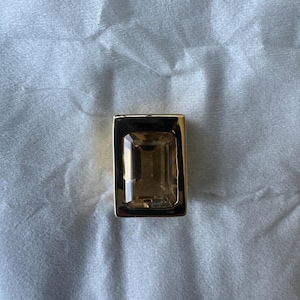
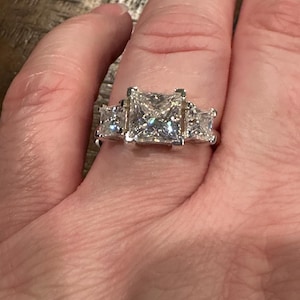
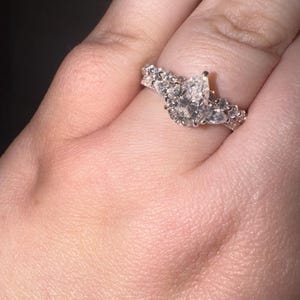

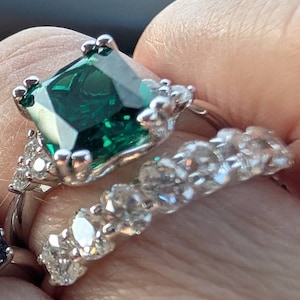

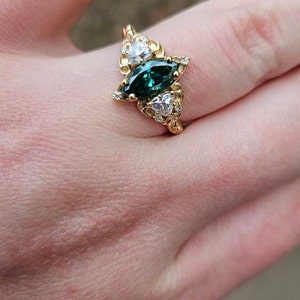
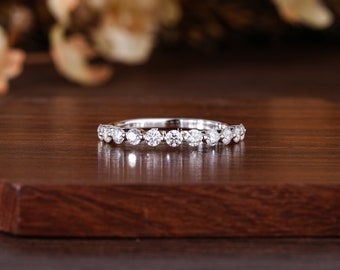
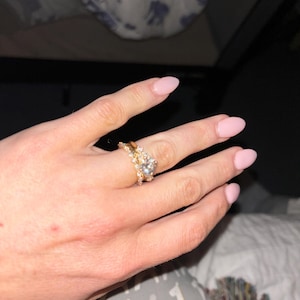

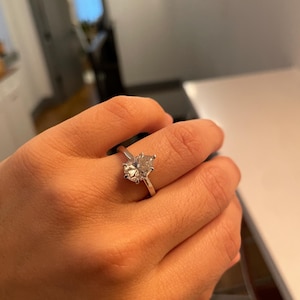

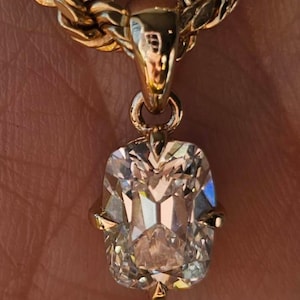






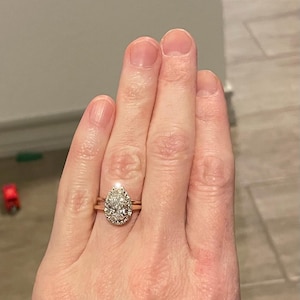

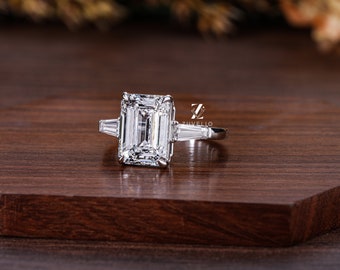
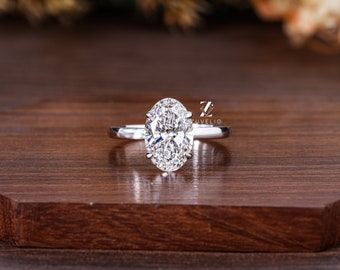
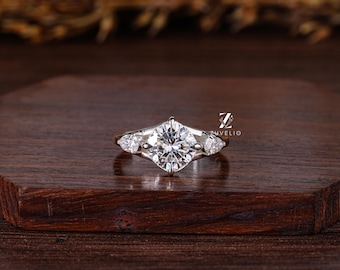


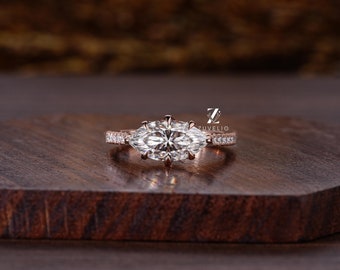
Leave a comment